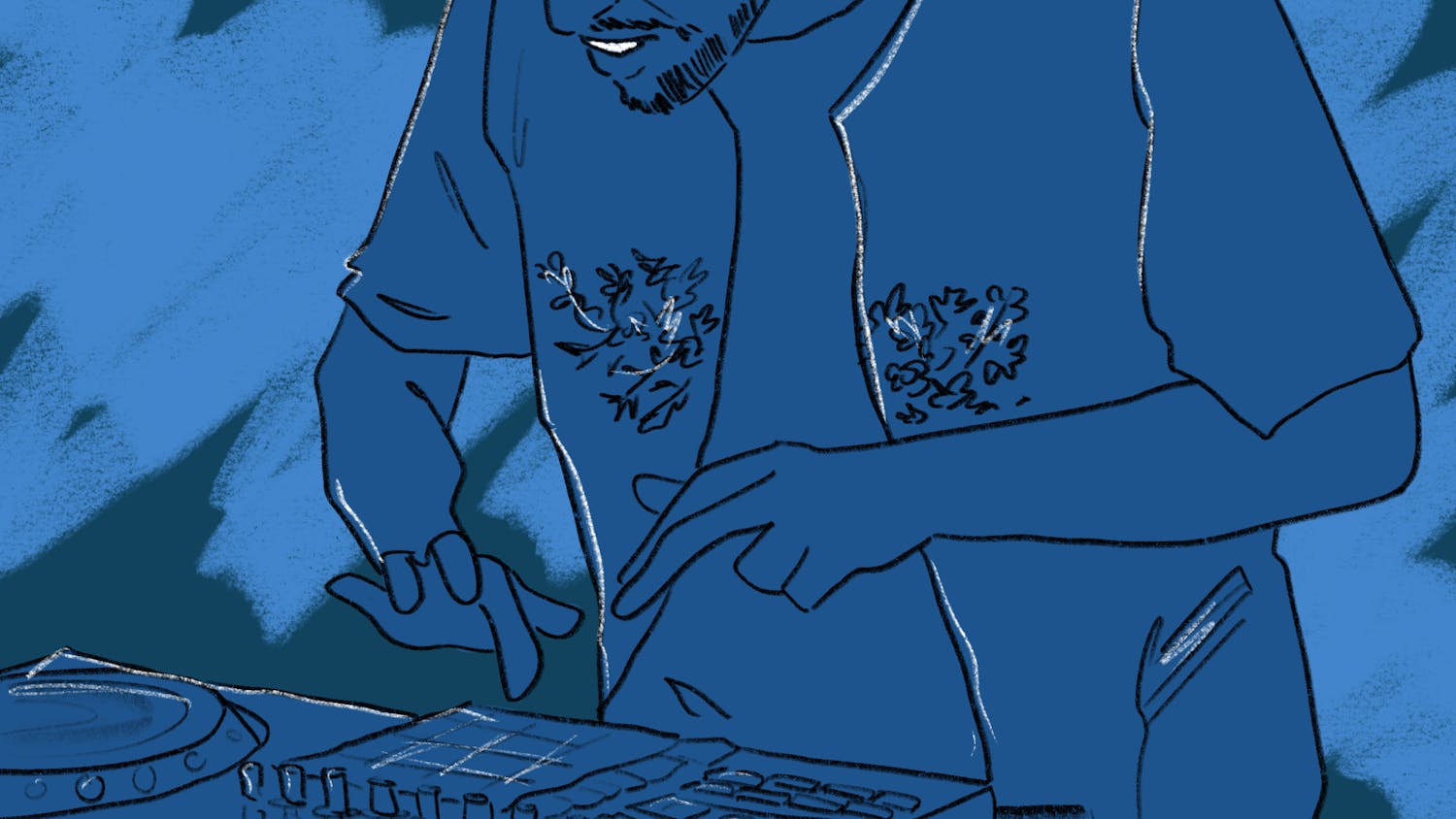Although Friday night's performance by the Trisha Brown Dance Company in Moore Auditorium did not draw boos like the Metropolitan Opera's much-derided production of "Tosca" did last week in New York City, two of the ensemble's pieces drew little more than a tepid response from the audience, while the third was received with slightly more enthusiasm.
The company's third and most successful piece, "L'Amour au theatre" (2009), broke from Brown's usual aesthetic. In place of her traditional experimental interpretation of modern dance, the costumes and choreography followed normal conventions. Dancers wore simple white shirts and orange pants and were accompanied by a traditional set of music from Jean-Phillippe Rameau's opera, "Hippolyte et Aricie," rather than synthetic sounds or a march.
Yet while "L'Amour au theatre" followed modern dance's traditional structure, it retained Brown's creative innovation. Combined with the smoothness of modern dance, Brown's trademark unusual steps and movements flowed effortlessly. Brown still challenged dance traditions, having her female dancers lift their male counterparts. Couples and groups interacted, instead of dancing in simultaneous oblivion. Dancers from one group, for instance, hooked their legs around the bodies of another group.
Mime managed to creep into the work. At the end of the "L'Amour au theatre," the dancers simulated riding on horseback as two of the female dancers mounted the shoulders of the male dancers, drawing a cheap laugh from the crowd.
Overall, however, the performers seemed much more comfortable with this final piece, executing the choreography with more lift and spring than in the two pieces that preceded it.
"Foray Foret" (1990), the second piece, was set to march music by John Philip Sousa that was performed by the Upper Valley Community Band. The music began softly, giving the illusion that the band was far off in the distance, and gradually grew louder. The band sounded as if it was marching around the theater as the music initially came from speakers on the right side of theater and moved, in succession, to the front, then left, then back speakers of the theater.
The choreography mirrored the cyclical theme, with dancers performing the same routine in rounds connected to the "marching" music.
The late world-renowned artist and frequent Brown collaborator Robert Rauschenberg designed the set, music and costumes for several of the pieces.
"Foray Foret" proved that Rauschenberg is no Givenchy, and his tacky costume looked straight out of the Cher stylebook. The female dancers wore tube tops or sports bras and three-quarter bell-bottoms made of shiny silver fabric. The male dancers wore bell-bottoms seemingly crafted from burlap, and at their waistlines were false cummerbunds of varying colors akin to clothing Cher would have worn in her gypsy phase.
Rauschenberg was more in his element when he designed the set of "Foray Foret." The set illustrated the work's cyclical theme in the form of gorgeous prints of an abstract sky with ebbing and flowing brightness projected against a backdrop. The first print had a reddish glow, and each projection was successively brighter and then darker and darker, simulating the sunrise and sunset, night and day.
Despite some jerky movements by the dancers, the choreography of "Foray Foret" was innovative in its use of contact. A dancer would grab another by the waist to pivot him or her. Later, three dancers intentionally collided as they entered from the wings at running speed, and only one remained center stage to perform a solo.
The ensemble's first piece, "You can see us" (1995), failed to deliver on the lofty expectations laid out at a discussion on Thursday in Loew Auditorium with Brown and former company manager John Killacky.
In that discussion, Brown described how, in choreographing the piece, she sought to explore how to dance with her back to the audience. After the world-renowned dancer Mikhail Baryshnikov took an interest in the piece, it evolved into a duet with female facing away and male facing toward the audience, both performing parallel movements.
Company dancer Dai Jian failed to live up to Baryshnikov's mantle, never making a connection with the audience. Jian had small breaks between motions as if he were posing, contrasting with the fluidity of Baryshnikov's style (which is evident to viewers familiar with Baryshnikov as Carrie Bradshaw's "The Russian" on "Sex and the City"). Jian was not an ideal complement for Leah Morrison, his turned-away partner, who executed her steps more fluidly and on rhythm.
Rauschenberg's costume for Morrison, a simple white dress with a cut-out back, worked with Brown's vision, allowing audiences to see Morrison's tensing back muscles. Jian's costume, on the other hand, was a long loincloth that did nothing to enhance Brown's artistic goals. The conceptual "You can see us" would have worked better as a performance piece in an art gallery, rather than as theatrical performance. Early in her career, Brown debuted many works in galleries.
Had audience members been able to stand in a circle around the dancers, Brown's vision of a dance that can be observed from several angles might have been better realized.



